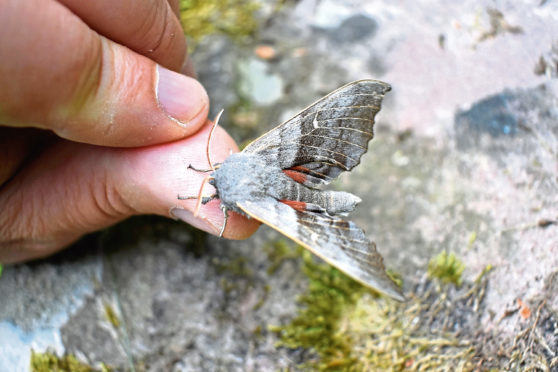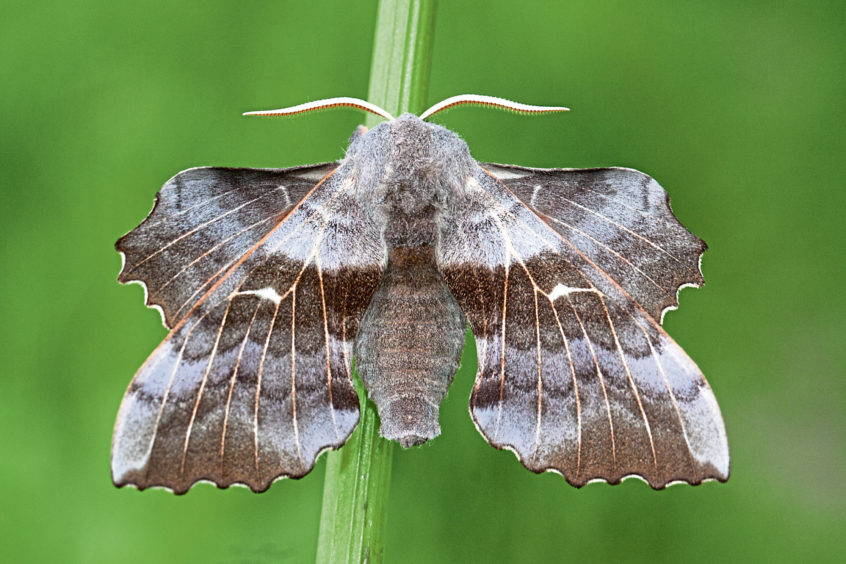There are between 1,200 and 1,300 species of moth in Scotland, compared with only 33 types of butterfly, that are conveniently split into two groups – the macro moths and the micro moths.
Standing in this wood by the edge of the Ochils on the cusp of evening darkness, the only sound the gurgling of a nearby burn, it is like entering a different world. I focus the beam of my torch up into the tree canopy, and I see moths – lots of them, resembling fluttering snow-flakes in the breeze.
The wood is revealing its natural secrets under this artificial glow, and I suddenly feel guilty, as if trespassing upon a place where I shouldn’t be. I turn the torch off – that’s better, I don’t see the moths anymore, but I do now feel a sense of belonging, becoming part of this summer nocturnal wood.
Under the last glimmer from the gloaming sky, a bat flits past my face, hawking for the very same moths I had previously illuminated. Here, in the midst of the dark wildwood, nature is at work; predator against prey, a battle for survival.
The next morning, I check my live moth trap – a simple contraption with a soft light to attract the insects during the hours of darkness. They then flutter down into the trap through a narrowing net funnel, a bit like a lobster creel, from which they can’t escape.
There is a good haul – but two really catch my eye. The first is a light emerald moth that hasn’t even entered the trap but is clinging to the fine mesh outside. This is a most exquisite creature, with its emerald wings crossed by a thin white line, edged with an even deeper green. The other, is an old favourite of mine; a poplar hawkmoth. This is a large moth with strange notched, grey patterned wings and a furred body.
I gently remove the hawk-moth from the trap and place it on a garden wall. The wings quickly fold together and then begin to quiver, faster and faster, as it warms its muscles in preparation for flight. Within a couple of minutes, the muscles are ready, and then up it flies, disappearing into the nearby trees.
I’ve never seen either of these species when out walking in the countryside during daytime because they are the masters of concealment, lying still in the leaf canopy, their cryptic colours and patterns blending seamlessly with the environment. For that reason alone, a light trap is a vital tool for entomologists trying to assess moth populations.
And, make no mistake, knowing about their numbers and diversity is so very important, for moths are fundamental to our ecosystem. Both caterpillars and adults comprising important prey for many creatures, including birds and bats. Moths are also prolific pollinators, actively foraging amongst flowers for their sweet nectar.
The following night, I am back in my wood, sitting on a tree stump by the burbling burn. I’ve left the torch at home this time, but I know the moths are there, and like a comfort blanket, that knowledge provides me with a wonderful sense of wellbeing.











